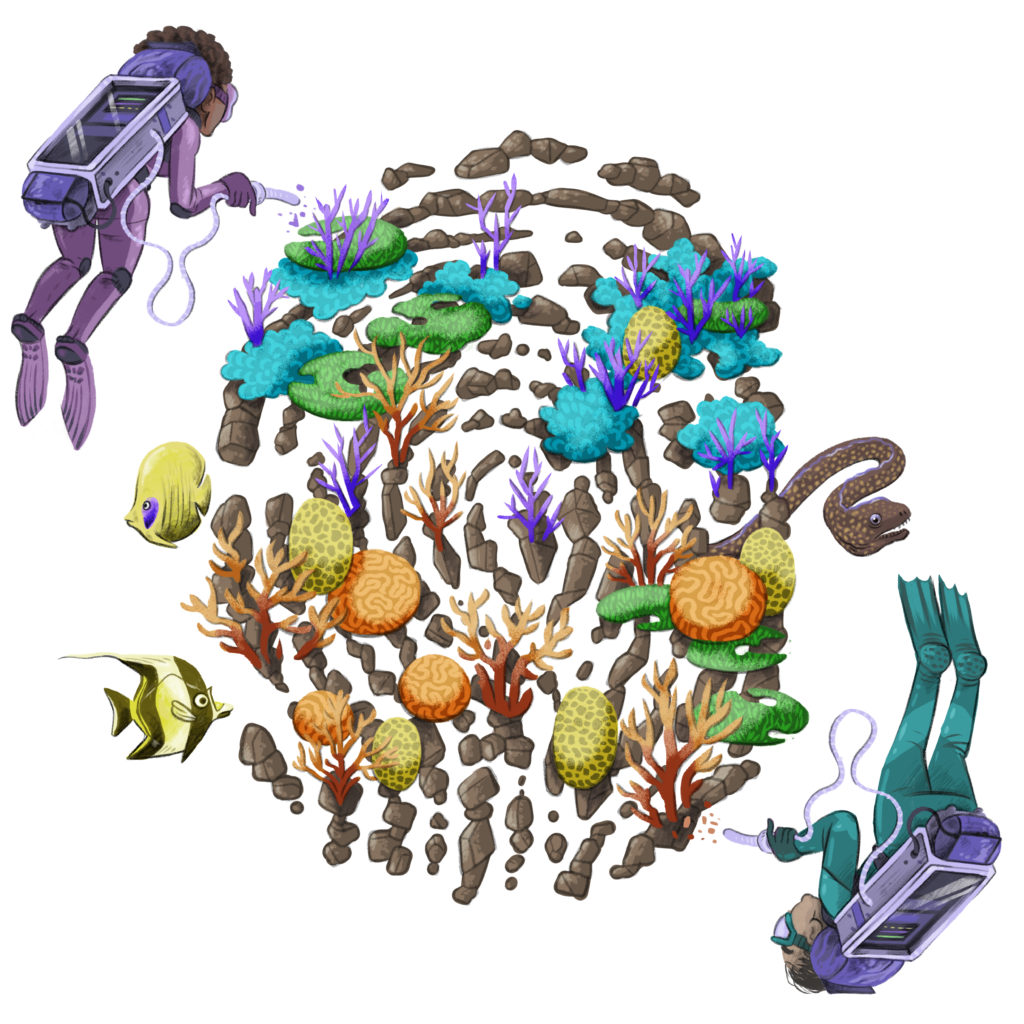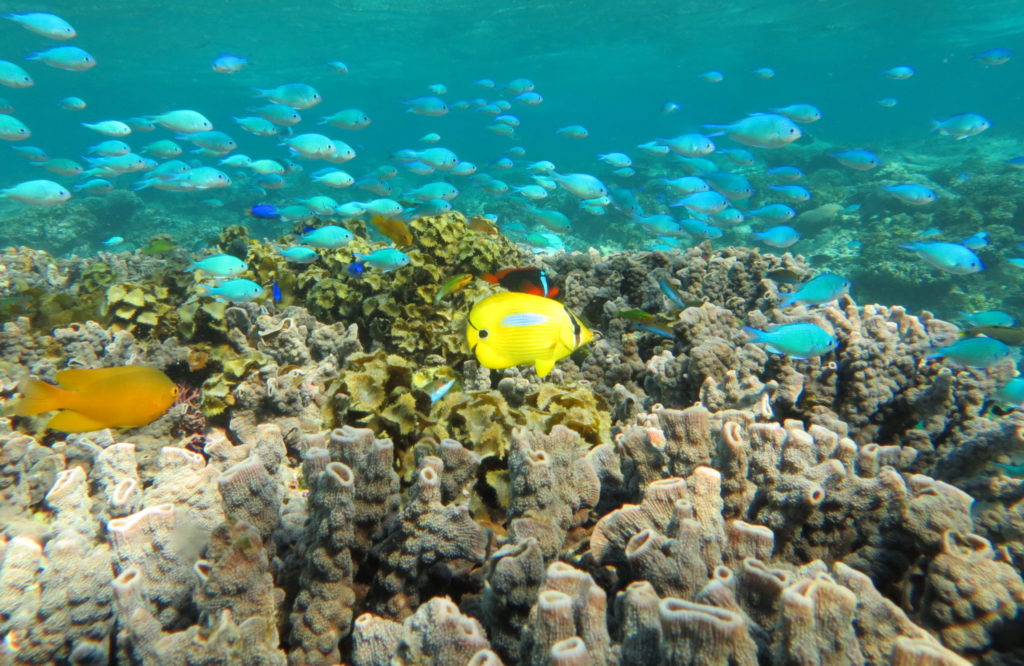Global S&T Development Trend Analysis Platform of Resources and Environment
| Invisible ID: using microbes to ‘fingerprint’ ocean health | |
| admin | |
| 2020-06-15 | |
| 发布年 | 2020 |
| 语种 | 英语 |
| 国家 | 澳大利亚 |
| 领域 | 地球科学 |
| 正文(英文) |  Marine microbes make up 90 per cent of ocean biomass. Changes to marine microbes can have a domino effect on entire marine ecosystems. We asked for your ideas to protect and manage future oceans, as part of our Word Oceans Day competition. And you delivered! Congratulations to David Abbott for one of the winning entries. David’s idea was:
 David was on the right track when suggesting marine microbes are the key to future ocean health. Marine microbes from seawater sampling helps us track ocean changes. Illustration: Campbell Whyte. What are microbial fingerprints? Do they really exist? And if they do, what do they tell us about the ocean? We asked Andrew Bissett, team leader for our Environmental Genomics team, to tell us more. Probing into microbesA microbiome is the collection of microbes (bacteria, fungi, protozoa, viruses) living in an environment. That environment could be the ocean, the soil or an animal. Just like the microbiomes in our gut influence our health, marine microbiomes influence ocean health. Marine microbes can’t be seen with the naked eye. But they produce half the oxygen we breathe and provide food for all marine life. If microbiomes change, this can have a domino effect on entire marine ecosystems. Attention is in the DNA detailUnlike larger species, such as plants and fish which are slower to respond to ocean changes, the marine microbial community responds quickly to changes in the environment. That’s why collecting long-term data on microbes is key to understanding and predicting ocean health. We use markers from microbial DNA like a tracking device. Any changes to the DNA sequences shows how microbes are responding to changes in the marine environment. This could be from the influence of climate change, ocean temperature, metals or pollution. This is particularly helpful for monitoring environmental stressors for marine ecosystems, like the Great Barrier Reef for example. It enables us to map specific tell-tale signs of change, such as ocean warming, and how this is impacting the Reef.  We can barcode marine life, including ‘invisible’ but important microbes and fish using their DNA found in the water to track ocean health. Image: Russ Babcock. On the microbial huntTo record and track microbes, we regularly take water and sediment samples from the ocean. This includes from the Integrated Marine Observing System’s National Reference Stations across Australia. The data is collected over years to establish a baseline and detect changes over time. This data feeds into the Australian Microbiome Initiative which brings leading research institutions together to make all things microbial from many environments, including the ocean, publicly available. From our samples, we’ve recorded more than 940,000 marine microbial organisms and close to 720 million sequences. This builds on marine microbe datasets. Invisible diversityFrom a bucket of sea water, we can identify not only microbes, but also other marine life nearby such as fish, whales and even seaweed. We use their environmental DNA, known as eDNA, without even seeing them! This is because they shed cells and fragments of DNA in the water. We use this to sequence their DNA and identify them. It’s like a barcode for marine life. We used this method recently to track tropical fish in Ashmore Reef. This method helps us map biodiversity of all kinds. Microbes can also enhance the environment’s resilience to stress. For example, we are exploring how to manipulate microbe bacterial communities in seagrass. This will assist with seagrass restoration and conservation. Thriving or surviving: key to our seasMaking up 90 per cent of ocean biomass, marine microbes are indeed the key to managing marine ecosystems, such as reefs, as David suggests in the winning idea. Marine microbes will continue to play an important role for assessing if our oceans are thriving or surviving. Our goal – through machine learning – is to predict what changes will occur before they happen. This will unlock what our future oceans will look like. |
| URL | 查看原文 |
| 来源平台 | Commonwealth Scientific and Industrial Research Organisation |
| 文献类型 | 新闻 |
| 条目标识符 | http://119.78.100.173/C666/handle/2XK7JSWQ/276079 |
| 专题 | 地球科学 |
| 推荐引用方式 GB/T 7714 | admin. Invisible ID: using microbes to ‘fingerprint’ ocean health. 2020. |
| 条目包含的文件 | 条目无相关文件。 | |||||
| 个性服务 |
| 推荐该条目 |
| 保存到收藏夹 |
| 查看访问统计 |
| 导出为Endnote文件 |
| 谷歌学术 |
| 谷歌学术中相似的文章 |
| [admin]的文章 |
| 百度学术 |
| 百度学术中相似的文章 |
| [admin]的文章 |
| 必应学术 |
| 必应学术中相似的文章 |
| [admin]的文章 |
| 相关权益政策 |
| 暂无数据 |
| 收藏/分享 |
除非特别说明,本系统中所有内容都受版权保护,并保留所有权利。
修改评论